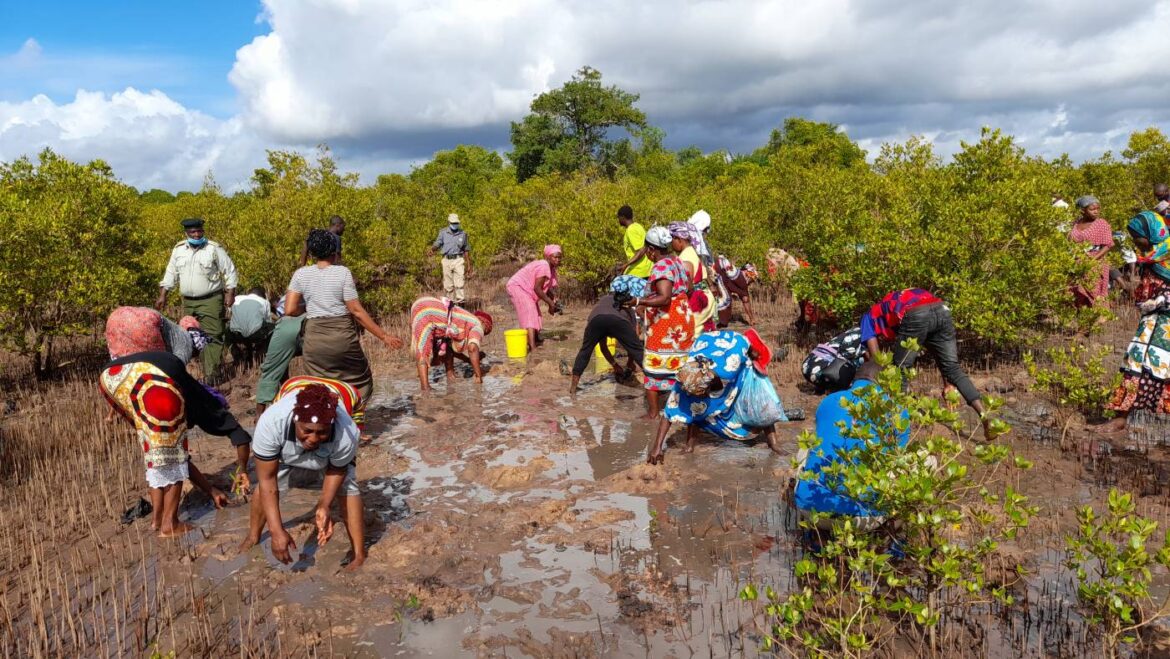On a riverbank in the Niger Delta, a group of residents in rubber boots is working to restore one of Nigeria’s most precious and damaged ecosystems: its mangrove forests.
These ecosystems, so crucial for biodiversity and coastal protection, have suffered massive destruction due to human activities, primarily from the oil industry and plastic pollution.
However, a group of locals is taking matters into their own hands to reverse this damage. “We are going to bring our mangroves back to life,” said David Oba, a local fisherman and community leader who represents ten thousand people in Bundu. “Without mangroves, floods invade our homes. They also help with our fishing activities,” he added.
Nigeria has the largest reserve of water-friendly trees in Africa. Mangroves are vital nature-based solutions to the climate change crisis. They store four times more carbon than traditional rainforests, serve as shoreline protection against floods and storms, prevent erosion, and maintain water quality and clarity. They are a hub for biodiversity while providing various economic benefits. However, Nigeria’s vast reserves are left unprotected and are, therefore, continuously depleted.
The residents of Bundu plunge their shovels into the muddy banks of the Niger Delta and saplings at the site near a sprawling slum on the outskirts of the southern oil city Port Harcourt. Community efforts are bringing new life to the Niger Delta’s mangrove forests, which are integral to regional biodiversity and coastal protection.
The primary cause of the massive loss of flora in this area is pollution from oil spills, caused by frequent breaches in the pipelines due to inadequate maintenance and acts of vandalism. “Most multinationals like Shell, Total, Mobil, and others have pipelines here,” fisherman Peter Opogulaya told AFP. “Their pipelines pass through villages, and sometimes, probably due to negligence, there are leaks in these pipes. When a spill occurs, we cannot fish.” Opogulaya said. Over the last five years, the National Oil Spill Detection and Response Agency has recorded almost 3,870 spills in Nigeria, mainly in the Niger Delta.
Helped by a Nigerian non-governmental group, the Center for Environment, Human Rights, and Development, the restoration project has clearly defined its objective: training local leaders and villagers in restorative techniques. In Bundu, around 30 people have learned how to restore mangrove ecosystems. Priority is given to training community leaders so they can pass on their skills. Mr. Oba said he has trained seventy people in Bundu since starting the project there.
Nigeria boasts some of the highest mangrove coverage in the world, more than anywhere else in Africa, but its forests are shrinking.
The country had around 3,500 square miles of mangrove forest in 2020, according to the monitoring platform Global Mangrove Watch. Between 1996 and 2020 it lost around 70 square miles of mangroves, about two percent of the total, an area equal to more than 22,500 football pitches.

On the other side of the Atlantic Ocean, mangroves are found in the United States only in three states. Florida, Texas, and Louisiana. Florida is home to three types of native mangrove species: The red mangrove (Rhizophora mangle), The black mangrove (Avicennia germinans), and white mangrove (Laguncularia racemosa).
In the Sunshine State, human development is the greatest threat to mangrove communities. Since the 1950s, more than 60% of mangroves in Monroe County have been destroyed for development.
Given the importance of mangroves and their continued destruction, the Mangrove Trimming and preservation Act was passed in 1996, making it illegal to remove, destroy, or damage mangroves in the state of Florida. The law also requires the use of certified, professional mangrove trimmers to ensure these trees are properly maintained. Mangroves have also been designated as a species of special concern.

